| PETERVANHAM.COM BIOGRAPHIES BOOKS MUSIC / FILM PUBLICATIONS & LECTURES NORTHEAST INDIA WESTERN HIMALAYAS PHOTO-ARCHIVES UPCOMING CONTACT |
|||||||
| TABO MONASTERY | |||||||
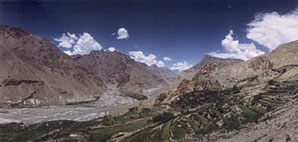
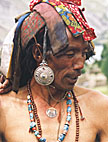
Without the influence of man Spiti‘s landscape would have remained completely barren, as may be obtained from inaccessible places where only shrubs of juniper and some thorny bushes make up the vegetation. But man‘s skillfull and intelligent ways of leading the melting waters of the glaciers onto his fields made it possible to cultivate small strips of land for barley, peas and buckwheat and plant modest trees like willows and poplars. It is these green spots that to the visitor create the beautiful impression of change between the grey and brown landmasses typical for the Himalayan arid zone and that form the background for the impressively rich culture of the Buddhist dominated countries of the Indo-Tibetan border countries.
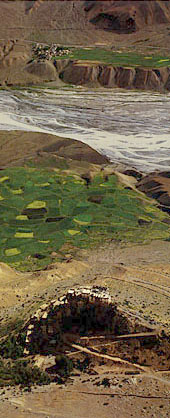
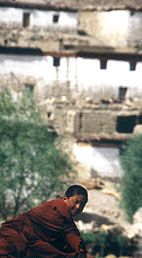
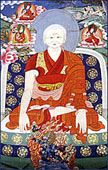
Most of the important cultural sites of the Western Himalaya are attributed to a person who was born in Northern Kinnaur in the middle of the 10th century. This man was to become one of the most important figures of Tibetan Buddhism and is still highly respected in Northern Kinnaur and the adjacent Spiti: Rinchen Zangpo, the Great Translator (958-1055 AD). His achievement was the so-called Second propagation of Buddhism in Tibet, after it was repressed for nearly two centuries. Patronized by the Western Tibetan king Yeshe O who himself had become a monk he achieved the final conversion of practically the entire Tibet to the Buddhist faith by translating more than 160 of the main religious texts, all of which have become essential manuscripts in the canonical scriptures of Tibetan Buddhism and are still studied today, and by building a great number of monasteries and temples in Western Tibet.
The highlights of Spiti are:
• Tabo Monastery
• Dhankar (the ancient capital of Spiti)
• Lhalung Monastery / Lingti Valley
• Pin Valley with the stone-breaking ritual of the Buchan Lamas
• Kye Monastery
• The landscape...
All these highlights and more are the subject of three books by Peter van Ham:
BUDDHA´S MOUNTAIN DESERT
The Secret Tibetan Heritage in the Himalayas
THE FORGOTTEN GODS OF TIBET
Early Buddhist Art in the Western Himalayas
ON THE PATHS OF THE BUDDHA
2000 kms through the Western Himalayas (in German language)
TABO MONASTERY,
KINNAUR, LAHAUL, CHANGTHANG, NUBRA